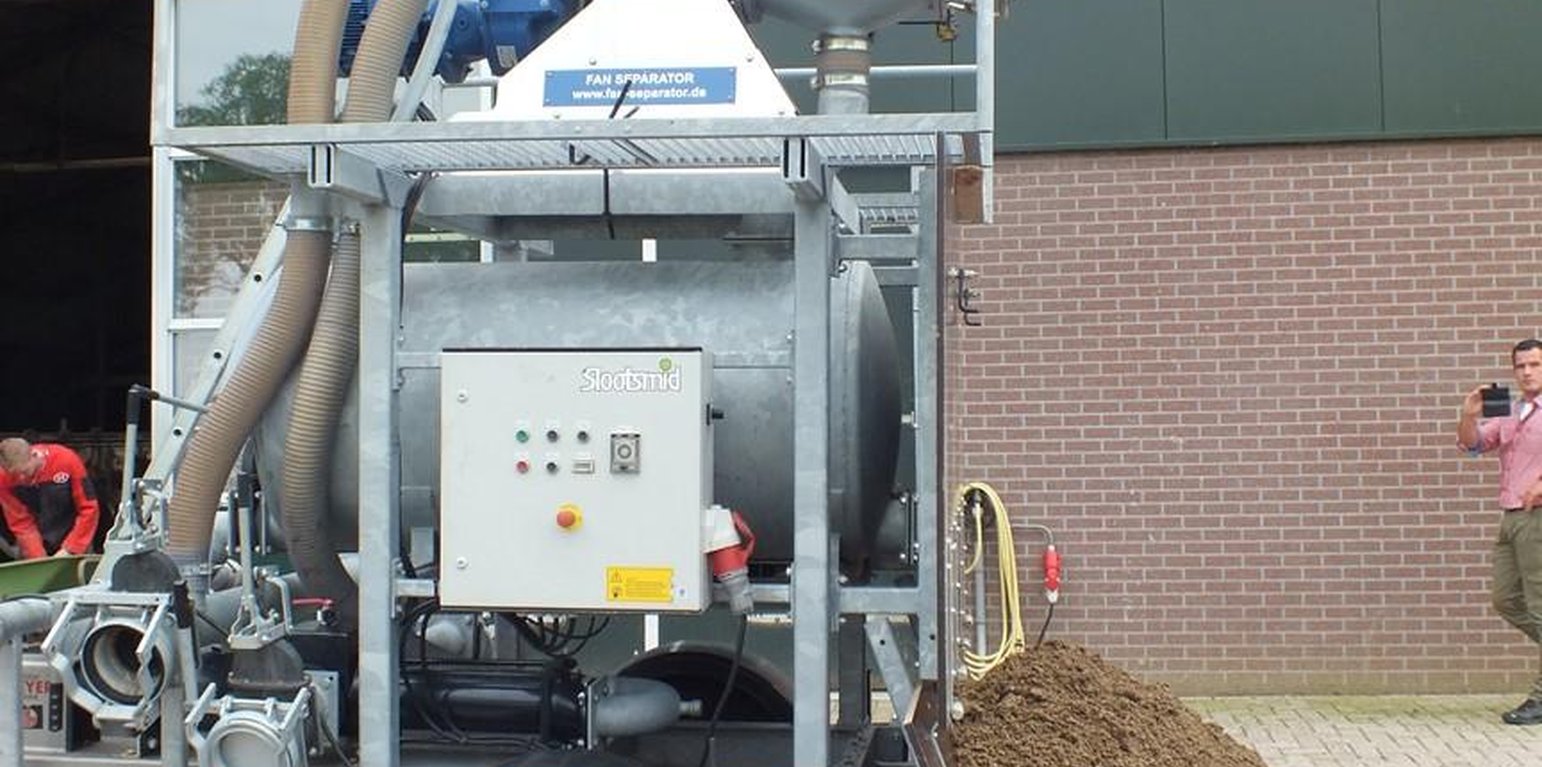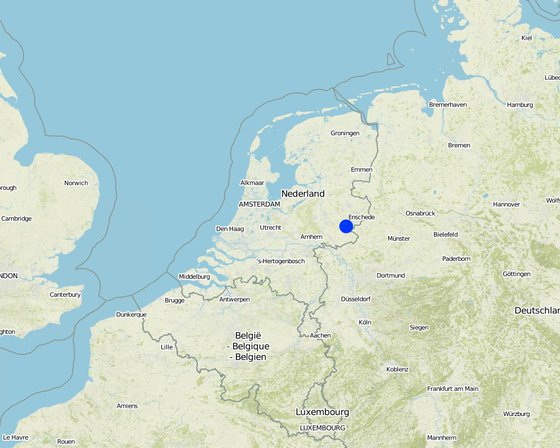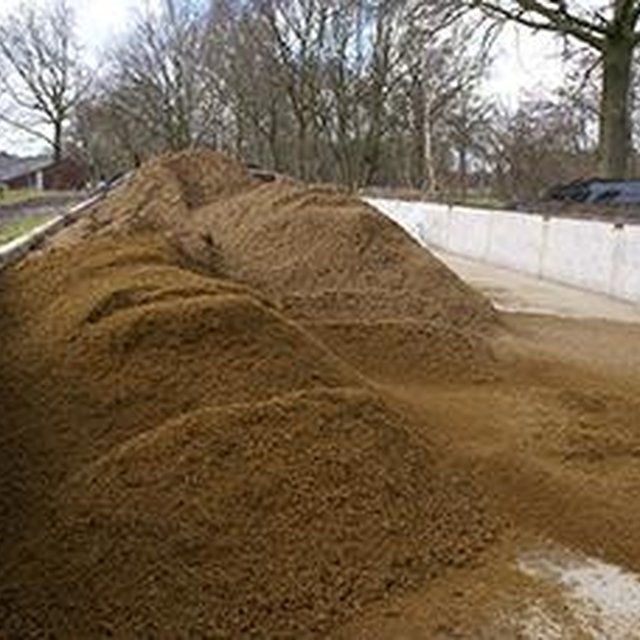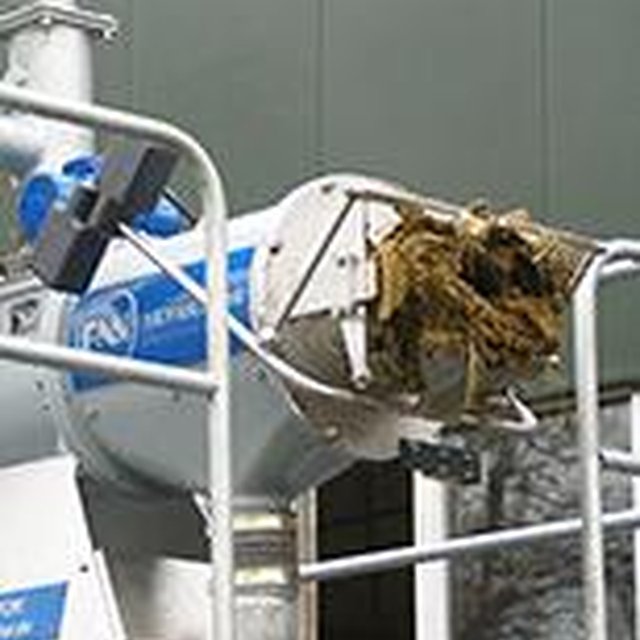



Het primaire doel van mestscheiding is de productie van een dikke
fractie met hoge gehalten aan organische stof en mineralen en een laag vochtgehalte. Een dergelijke geconcentreerde
fosfaatrijke fractie is een waardevolle organische meststof en kan over grote afstand vervoerd worden. De
dunne waterige fractie, met daarin het grootste deel van de stikstof, kan op eigen grond of in de nabije omgeving als
meststof worden aangewend of verder worden gezuiverd tot loosbaar water.
Slurry manure is fed through a manure separator that separates much of the thick material from the liquid portion. These fractions differ in the proportion between P and N; the thick fraction contains relatively more P than the thin fraction.
The thick fraction is used on maize fields or as substrate in cow stables; the thin fraction, with the larger part of the nitrogen, can be used on other parts of the farm or is exported from the farm to be treated for discharge in the environment. Due to stricter regulations for the application of N and P to crop land and grassland, less manure may be applied to the land. If manure must be exported because the threshold for P is reached, this implies that also N is exported from the farm.
Purpose of the Technology: Slurry from livestock consists of more than 90% of water. The primary purpose of manure separation is to produce a thick fraction with high contents of organic matter and nutrients and a low moisture content. The thick fraction is a valuable fertiliser and can be transported over large distances. The thin fraction, with the larger part of the nitrogen, can be applied as fertiliser on the farm, on farmland in the proximity, or can be treated into a quality suitable for discharge in the environment or water drainage system.
Manure separation allows farmers to use organic matter from manure more efficiently at the farm level. Manure separation increases the efficiency of processing and using manure in 5 ways:
1. By concentrating phosphorus in the thick fraction the volume of manure to be exported can be decreased, and also the export of nitrogen from the farm.
2. Manure separation creates three types of manure (thick, thin and mixed), which allows for differentiated application to different fields and crops, and reductions on requirements for artificial fertiliser.
3. Manure separation decreases the volume of manure to be exported from farms, and therefore saves energy and transport costs.
4. The thick fraction can be stored in stacks, taking up less space.
5. The thick fraction can be used as substrate in stables, replacing costly sawdust.
Establishment / maintenance activities and inputs: Purchase a manure separator. Periodically feed your collected slurry manure through the separator and then apply the thick portion to your fields. Discard the liquid portion.
Natural / human environment: Dairy farming on sandy soils in the eastern part of The Netherlands. Stricter manure regulation originting from the Nitrates Directive sets a limit on the amounts of animal manure for farms on sandy and loess soils in the eastern and southern part of The Netherlands.

Байршил: Haarlo - Oude Eibergen, Gelderland, Нидерланд
Дүн шинжилгээнд хамрагдсан технологи нэвтрүүлсэн газрын тоо:
Технологийн тархалт: газар дээр жигд тархсан (approx. < 0.1 км2 (10 га))
Тусгай хамгаалалттай газар нутагт?:
Хэрэгжилтийн огноо: <10 жилийн өмнө (саяхны)
Нутагшууллын төрөл





| Зардлын нэр, төрөл | Хэмжих нэгж | Тоо хэмжээ | Нэгжийн үнэ (Euro) | Зардал бүрийн нийт өртөг (Euro) | Нийт дүнгээс газар ашиглагчийн төлсөн % |
| Тоног төхөөрөмж | |||||
| Seperator | Machine | 1.0 | 5320.0 | 5320.0 | |
| Технологи бий болгох нийт үнэ өртөг | 5'320.0 | ||||
| Технологи бий болгох нийт үнэ өртөг, ам.доллар | 5'659.57 | ||||
| Зардлын нэр, төрөл | Хэмжих нэгж | Тоо хэмжээ | Нэгжийн үнэ (Euro) | Зардал бүрийн нийт өртөг (Euro) | Нийт дүнгээс газар ашиглагчийн төлсөн % |
| Хөдөлмөр эрхлэлт | |||||
| Labour | ha | 1.0 | 127.68 | 127.68 | 100.0 |
| Sampling manure | ha | 1.0 | 21.28 | 21.28 | 100.0 |
| Тоног төхөөрөмж | |||||
| Machine use | ha | 1.0 | 308.56 | 308.56 | 100.0 |
| rent of manure separator | h | 1.0 | 16.5 | 16.5 | 100.0 |
| depreciation costs | m3 | 1.0 | 0.65 | 0.65 | |
| maintenance | machine | 1.0 | 0.3 | 0.3 | |
| Electricity | ha | 1.0 | 3.72 | 3.72 | 100.0 |
| Бордоо ба биоцид | |||||
| Extra Potassium | ha | 1.0 | 10.64 | 10.64 | 100.0 |
| Технологийн арчилгаа/урсгал үйл ажиллагаанд шаардагдах нийт үнэ өртөг | 489.33 | ||||
| Технологи арчилах ба урсгал ажлын нийт үнэ өртөг, ам.доллар | 520.56 | ||||
expected, based on better targeted fertiliser application
expected due to increase of SOM
On artificial fertiliser (30-80% reduction on N fertiliser) and substrate for cow stables. But since the thick fraction contains less N per kg of P2O5 than the original mix, farners applying the thick fraction (for maize as described in this QT) may need to apply more articial N-fertilizer
Decreased costs for manure export from the farm: A smaller part of the total manure mix needs to be exported (ca 35% less N-export than without manure separation; 10-30% less net energy use)
Thick fraction is less voluminous and can be stacked
ГТМ хэрэгжихээс өмнөх тоо хэмжээ: 4-7 GJ/ha
ГТМ хэрэгжиснээс хойшхи тоо хэмжээ: 3-5 GJ/ha
Energy use for manure transport, processing, digestion and fertiliser use
For farms with less than 1000-2000 tons of manure to be separated expenses on manure separation become larger than benefits. Such farms could better hire a mobile separator, as in the descirption of this SLM technology.
Dairy farmers have learned more about the importance of soil organic matter for their production systems, and about the consequences of soil and manure management on soil organic matter and other aspects of soil health. This learning was brought by the exchange of knowledge between farmers and experts, and between farmers themselves. Farmers also profited from services provided to them by the farmers' foundations: shared investments (e.g. in the manure separator) and support in the application for subsidies to finance the SLM measure.
expected: reduction in leaching of nitrate and phosphorus due to better targeted manuring to plant needs
due to increased SOM
due to improved manure composition for crop growth and build-up of SOM
due to better targeted fertiliser use to needs of crops and reduced use of artificial fertiliser (30-80% less supply of N-fertiliser required)
ГТМ хэрэгжихээс өмнөх тоо хэмжээ: 18
ГТМ хэрэгжиснээс хойшхи тоо хэмжээ: 20
NH3 loss in kg/ha, for dairy farms with 1.75 cows/ha, manure prod of 255 kg N/haand other assumptions; model estimate
ГТМ хэрэгжихээс өмнөх тоо хэмжээ: 1
ГТМ хэрэгжиснээс хойшхи тоо хэмжээ: 4
P2O5 surplus in kg/ha, same conditions
ГТМ хэрэгжихээс өмнөх тоо хэмжээ: 12.5
ГТМ хэрэгжиснээс хойшхи тоо хэмжээ: 10.4
Reduced leaching of nitrate from fields where manure is applied due to less surplus of N in thin fraction(NO3-N in groundwater in mg/lfor farm with 1.75 dairy cows/ha)
ГТМ хэрэгжихээс өмнөх тоо хэмжээ: 4-7 GJ/ha
ГТМ хэрэгжиснээс хойшхи тоо хэмжээ: 3-5 GJ/ha
Energy use for transport of manure from farms, processing, digestion, fertiliser use